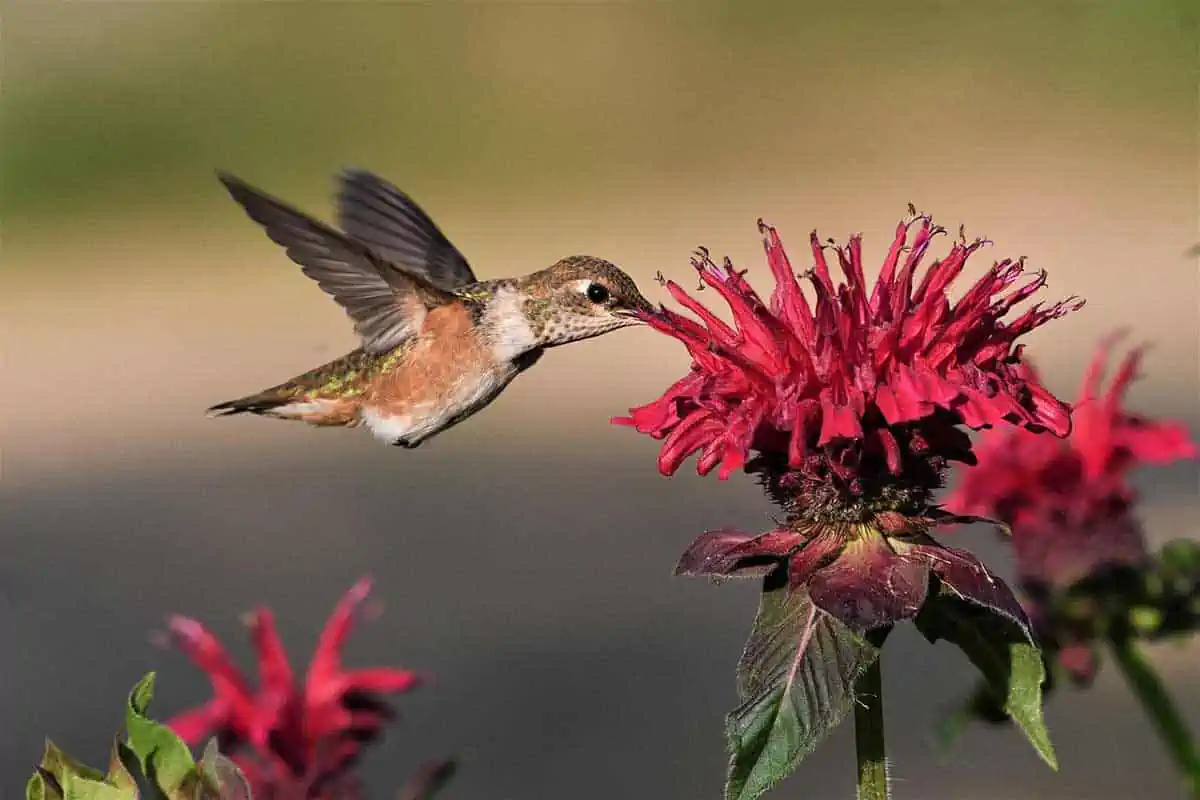Adding flowers and plants to your yard or garden is a great way to attract hummingbirds. Not only will adding these plants make your outdoor area pop with color, but many of the flowers also offer lovely aromas and attract beneficial pollinators as well.
There are a few factors that plants and flowers that attract hummingbirds share. They tend to be bright and colorful, grow upward so hovering hummingbirds can easily sip their nectar, and have bell or tube-shaped blooms that easily hold nectar.
Consider planting these flowers and plants in the spring or summer to attract hummingbirds and help them prepare for their long migration in the fall. If you’re unsure of when hummingbirds migrate to your area, check out this article to know when to have plants and feeders ready.
20 PLANTS AND FLOWERS THAT ATTRACT HUMMINGBIRDS
1. BEE BALM
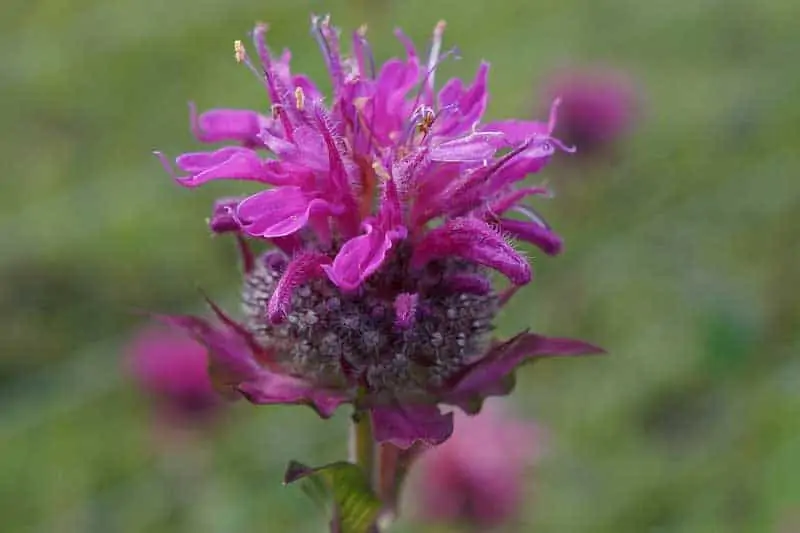
The perennial flower Bee Balm (Mondara) is native to North America. Hummingbirds have no problem drinking nectar from the tubular clusters of petals that surround them. Pinks, reds, purples, and even white blooms may be found in a variety of hues. Bee Balm is well-known among pollinators like butterflies and bees, and it will also attract hummingbirds.
2. CARDINAL FLOWER

The vibrant crimson red blooms of Cardinal Flowers (Lobelia Cardinalis) make it a favorite color of hummingbirds. Wildflower perennials, which originated in central America states such as Iowa, Illinois, and Wisconsin, are wildflower perennials. Cardinal Flowers grow in tall spikes and make a beautiful addition to garden borders and backgrounds, as do a lot of the other plants on this list.
3. COLUMBINE

The bell-shaped flowers of Columbine (Aquilegia) bloom in the mid-spring. They come in a range of hues, from delicate pastels to vivid reds and oranges. Columbine is a tough plant that can tolerate partial shade and drought, as well as being deer-resistant.
4. CORAL BELLS
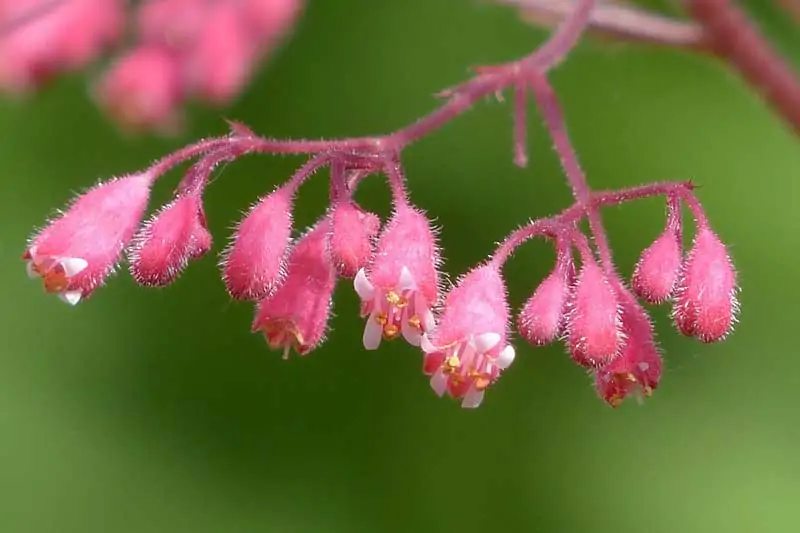
Coral Bells (Heuchera) provides fascinating foliage and towering spikes of blooms that hummingbirds adore, in addition to the best of both worlds. They are woodland plants that prefer partial shade and make a fantastic option for filling in parts of the yard that do not receive full sun. Low-growing plants that thrives in containers, Coral Bells are low-maintenance plants.
5. CROCOSMIA

The iris family includes brightly colored Crocosmia (Crocosmia) or Coppertips. They blossom in the summer, when many spring-blooming flowers are near their endpoint. Crocosmia has crimson, orange, or yellow blooms that are ideal for hummingbirds, and it originated in South Africa. Moreover, once established, it’s a hardy bulb that requires little attention.
6. DAYLILY

Daylilies (Hemerocallis) flowers last for just a day, but their blooms may span hundreds of meters in a month. You’ll never be short on blossoms since huge portions of plants may produce hundreds at a time. They’re simple to divide and distribute to other parts of your garden, with tuber-like roots that form clumps.
Daylilies come in over 30,000 different varieties, allowing you to pick from a variety of flower shapes. Flowers are big and deep, with stamens that look like those of hibiscus blooms.
7. DELPHINIUM
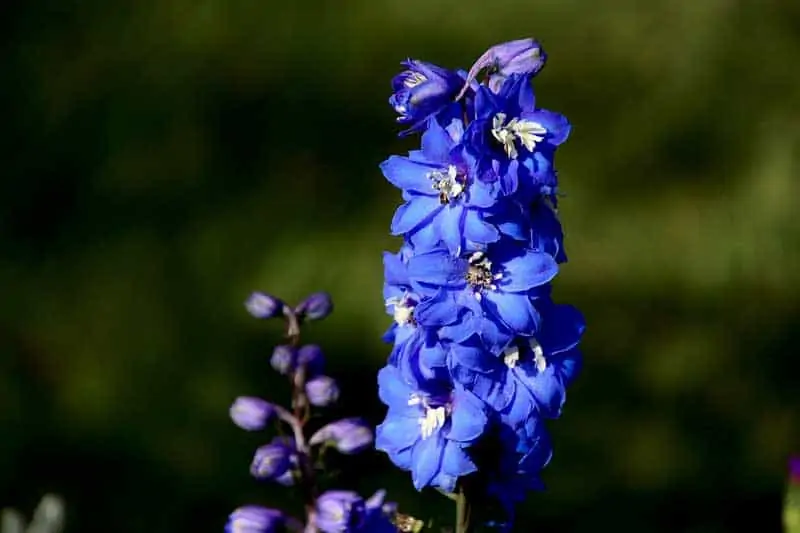
Delphiniums (Delphinium) have colorful, bell-shaped flowers that resemble Lupines. They’re also popular in cottage-style gardens and landscapes, as well as perennials. Delphiniums range in color from blues to whites and can grow up to 5 feet tall when grown properly. Late spring through the end of summer blooms begin, and they last.
8. HOLLYHOCK
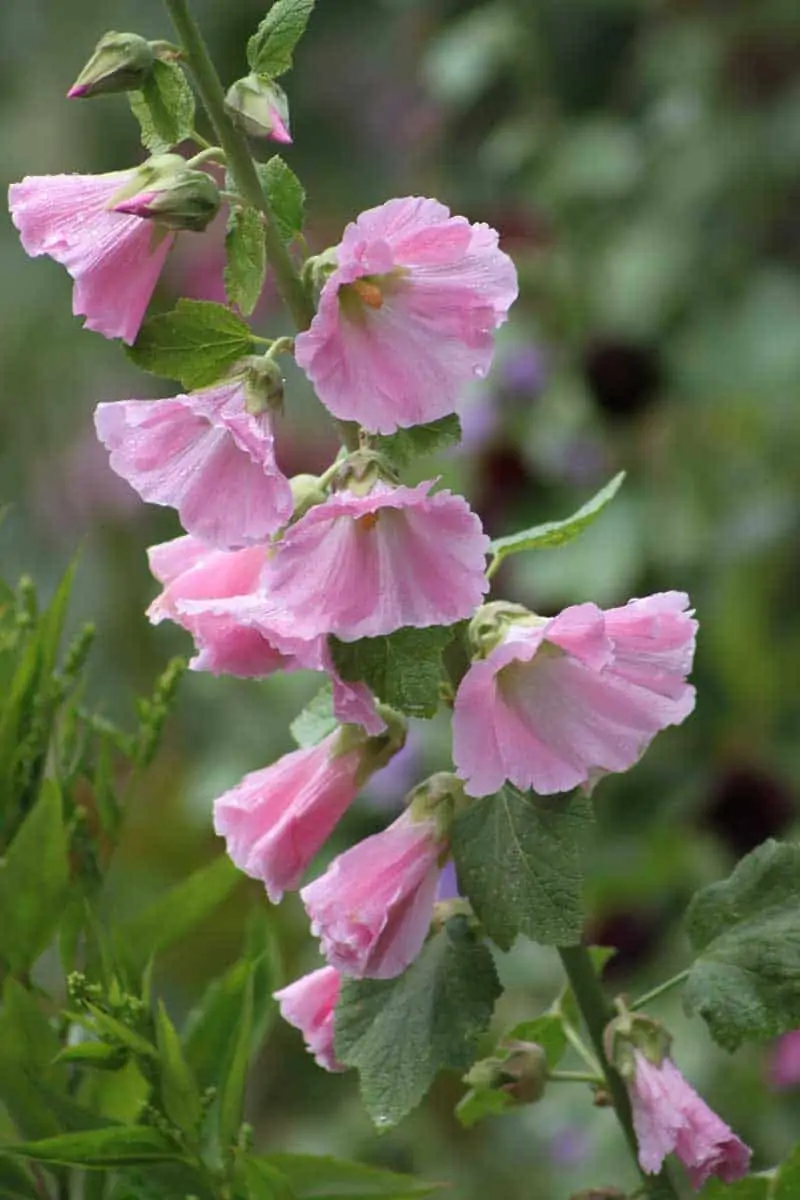
Another tall-growing, hardy plant with large, round flowers is Hollyhocks (Alcea). They self-seed readily and return the following season without difficulty, despite being biennial crops. They prefer bright light and may cope with most well-draining soil. To add depth to the garden, grow them in the back rows.
9. LUPINES

Lupines (Lupinus) come in hundreds of different varieties, but they are not native to North America. They feature towering spikes with colorful blooms. To attract hummingbirds and pollinators, consider adding the native perennial species Wild Lupine (Lupinus Perennis) to your garden. Lupines’ seed pods are also intriguing, as they explode once they’ve dried out and spread their seeds.
10. PHLOX
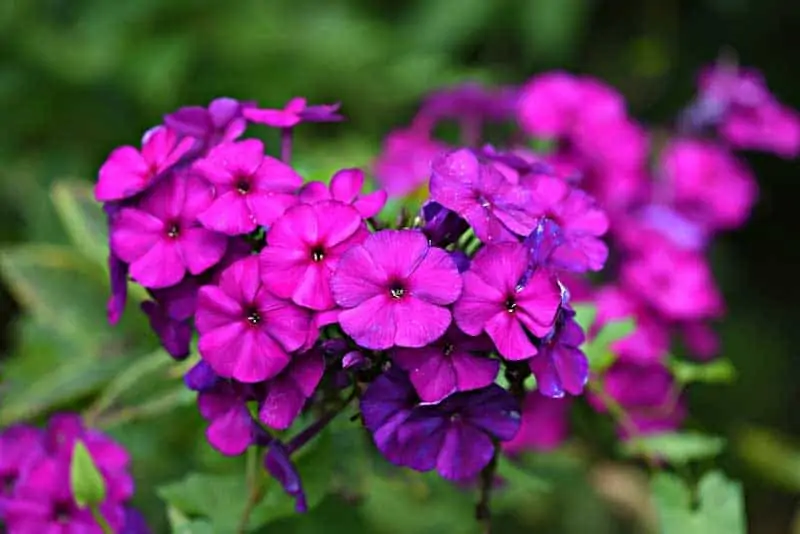
Tall Garden Phlox (Phlox paniculata) is a tall growing perennial with huge clusters of blooms. Volcano Ruby Tall Garden Phlox and variegated Nora Leigh Tall Garden Phlox are two of the many cultivars available. Phlox is a summer bloomer that originated in North America.
11. SALVIA
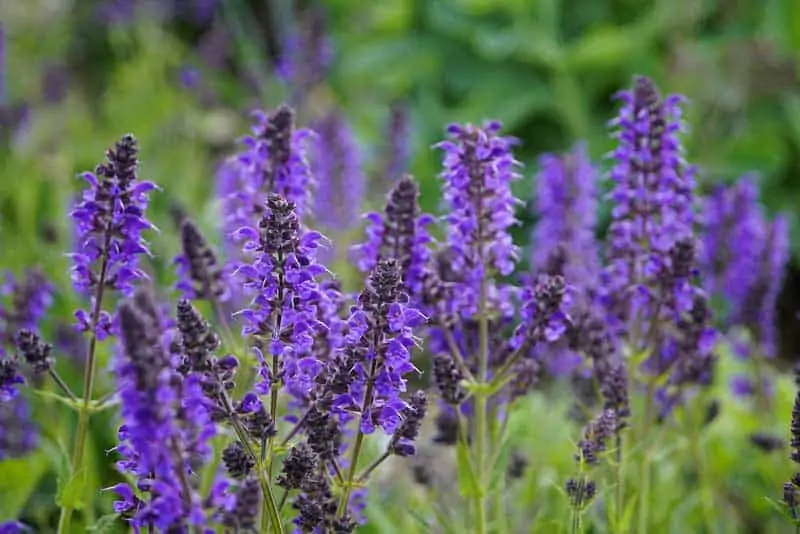
Several sages, annual salvia blooms, and perennial salvia blooms are part of the Salvias family of plants. Blue Hill Salvia (Salvia nemorosa) is one kind of Salvia that hummingbirds and pollinators will love. The purple-blue flowers on this easy to cultivate perennial give off a lovely fragrance, as well as spikes. Apart from full sun and occasional deadheading, it blooms for the majority of the summer.
12. BUTTERFLY BUSH
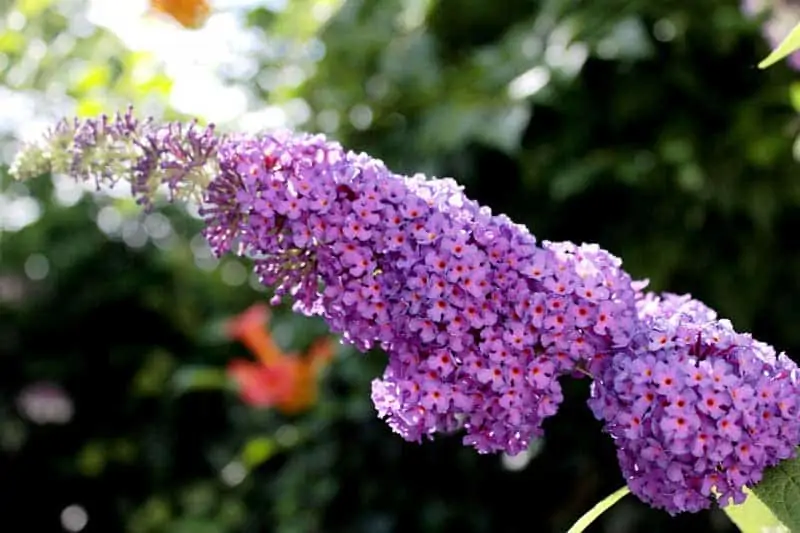
Butterflies and pollinators love Butterfly Bush (Buddleia davidii), but it’s also a popular hummingbird shrub. They blossom in the spring and summer, and even when they aren’t blooming, they continue to produce attractive foliage.
Red, pinks, purples, and white blooms appear in clusters on long branches known as panicles. When planting, make sure to provide it adequate room since they may reach a height of up to 12 feet and spread up to 15 feet (without trimming).
13. CYPRESS VINE

Cypress Vine (Ipomoea quamoclit) is a unique plant with star-shaped blooms and thin, airy leaves. It’s a Morning Glory species and a hungry climber that coils itself around tall stakes and poles, hence it’s a member of the Morning Glory family. From summer to fall, it blooms. To attract hummingbirds and pollinators, choose bright red blooms or pinks; it’s also known as Hummingbird Vine because it’s so popular with them.
14. FUCHSIA

Because of its cascading blooms of big, floppy flowers, Fushcia (Fuchsia) is an superb option for pots and hanging baskets. They prefer cooler temperatures and partial shade environments, making them a bit more delicate than other plants.
Fuchsias are flowering shrubs that are commonly planted in pots. Some perennial cultivars may grow to be over a meter tall. Bi-colored blossoms are found in certain types, however the most common colors are pinks, reds, and purples.
15. HONEYSUCKLE

The pleasant fragrance and clusters of tiny, bell-shaped blooms of honeysuckle (Lonicera) have made it popular. They like bright sun, but they can tolerate some partial shade. They perform well on a trellis or similar support, but can also be grown in pots. They are similar to Trumpet Vine in that regard. Honeysuckles come in over 100 different colors, and the Magnifica Honeysuckle has gorgeous crimson blooms that are irresistible to hummingbirds.
16. LANTANA

In regions that don’t frost, lantanas (Lantana camara) are simple to cultivate and bloom all year. In warmer growing regions, they’re perennials, but in colder regions, they’re usually annuals. While growing in warm regions, they have some vine-like characteristics but are technically shrubs. They frequently grow in hanging baskets in cold areas.
Hummingbirds will adore them either way, and they’ll definitely come to your yard. They have reds, oranges, yellows, purples, and whites in their blossoms, which bloom in circular clusters. Their blossoms often include various hues on one plant.
17. RHODODENDRON
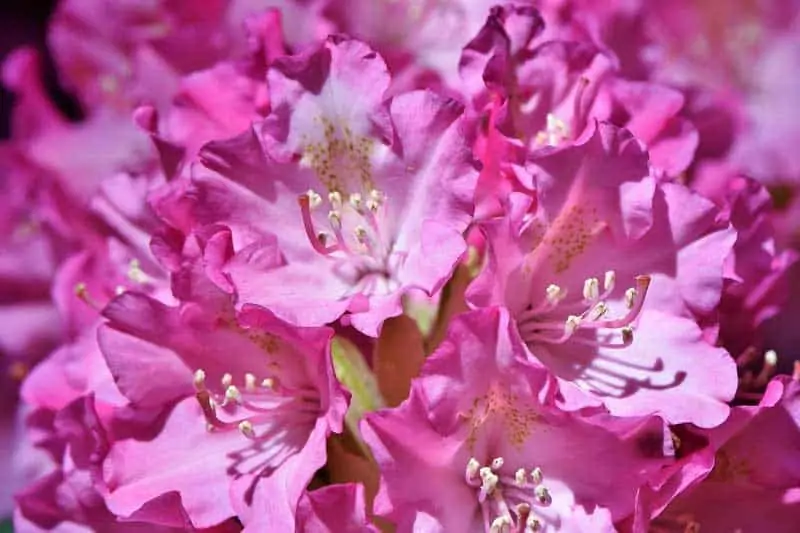
Catawba Rhododendron (Rhododendron Catawbiense) is a species of rhododendrons that is particularly appealing to hummingbirds. It is technically a whole genus of woody plants. This spreading evergreen shrub blooms from spring through early summer and is a huge, spreading plant.
It produces dense clusters of red, white, and purple blooms. In part shade with moist, acidic soil, Catawba Rhododendron thrives.
18. ROSE OF SHARON

Rose of Sharon (Hibiscus syriacus) is a large, spectacular bloom with a stamen protruding from the middle. It’s a late-blooming plant with numerous blooms throughout the season. Rose of Sharon thrives when positioned against a trellis or arbor, and has an upright growing habit. While pruning is critical for creating a desired form, it’s simple to care for and may tolerate neglect. Reds, blues, and whites are the best choices.
19. SILK TREE

Mimosa Trees (Silk Tree Mimosa) are native to Asia and can be invasive in certain regions of the United States. To avoid spreading, they’re simple to cultivate in huge containers. Hummingbirds are attracted to their pink or rose-colored blooms because they are fluffy, have a rich nectar, and have a lovely fragrance.
It has lacy, fern-like foliage. While planting in the ground, take care to leave some space for it, and be ready for its broad canopy and arching habit. It is fairly simple.
20. TRUMPET VINE

Trumpet Vine (Campsus radicans) has orange and red blooms that are fantastic for attracting hummingbirds to your yard. When it rapidly expands and self-sows, some gardeners find it distracting to grow this quick-growing perennial. It thrives in full sun and even partial shade and produces tube-shaped blooms that bloom from summer to autumn. Give it plenty of room to climb by putting it on a trellis or other support structure.
HOW TO MAKE YOUR OWN HUMMINGBIRD NECTAR
Your yard will be more attractive to these tiny birds if you set up a hummingbird feeder in addition to these plants and flowers. In addition, you may make your own nectar using just sugar and water. It is a really easy process.
INGREDIENTS:
1 cup of white table sugar (refined sugar only)
4 cups of water
DIRECTIONS:
- To aid the sugar in dissolving, heat your water. Use the hottest tap water your faucet can produce. Microwave the water for a minute, heat it up in a saucepan, or just use it. caffeine is poisonous to birds, so don’t use a coffee machine to heat water.
- In a clean container, mix the sugar and water. Slowly add the sugar to the water with a large spoon.
- Allow the solution to cool after all of the sugar grains have been completely dissolved. It’s ready to be poured into the feeder after it’s been cooled.
- Store any extra sugar water in the fridge for up to a week. Refilling the feeder will be quick and simple if you store extra nectar.
